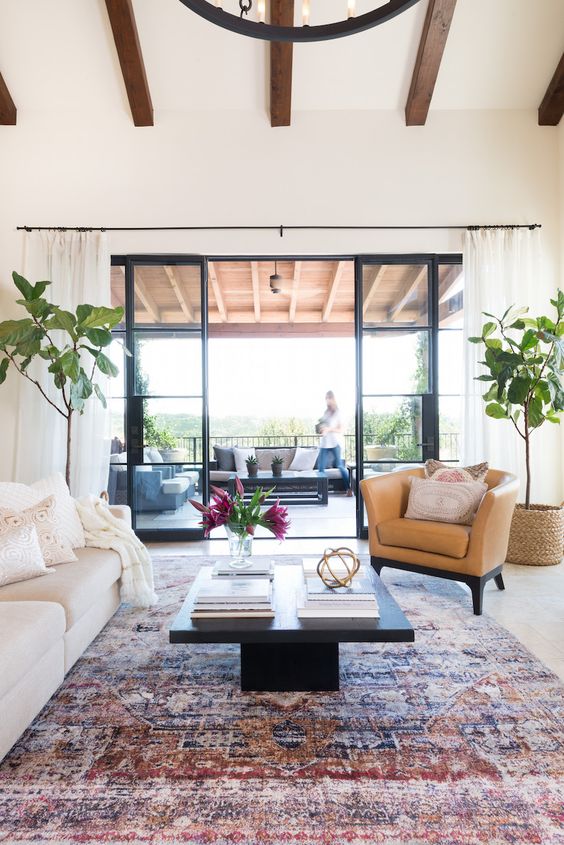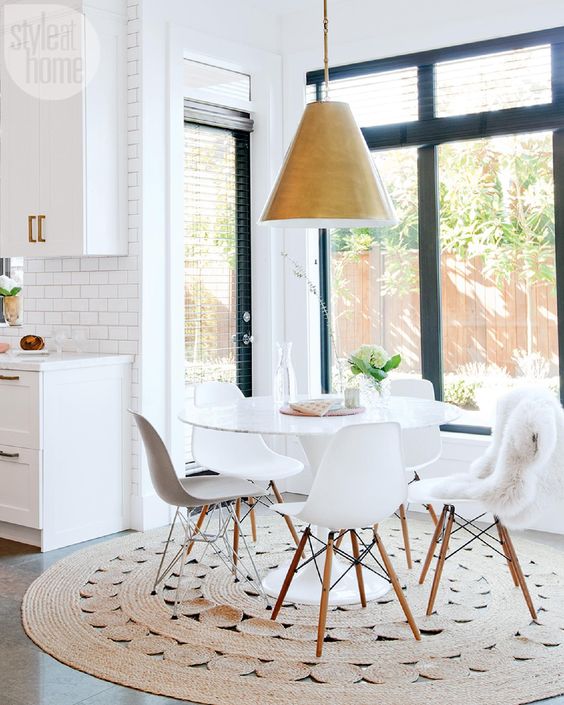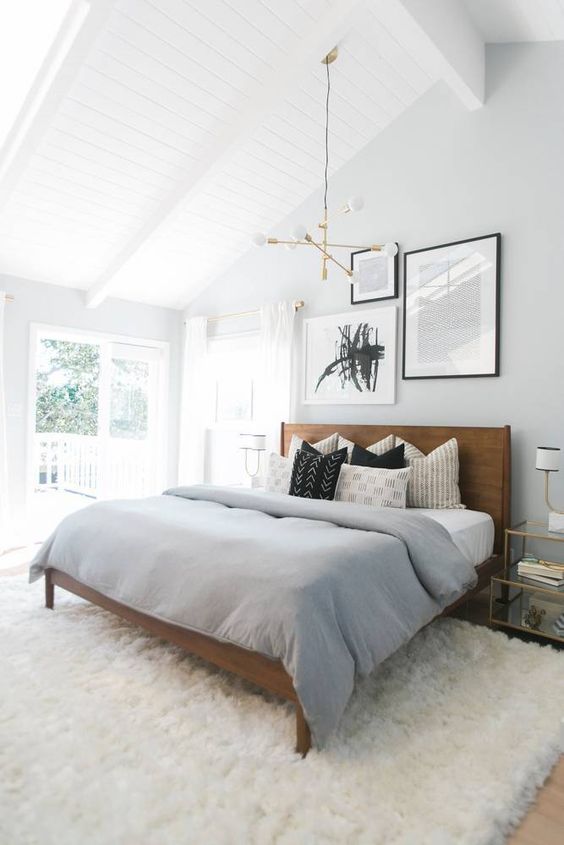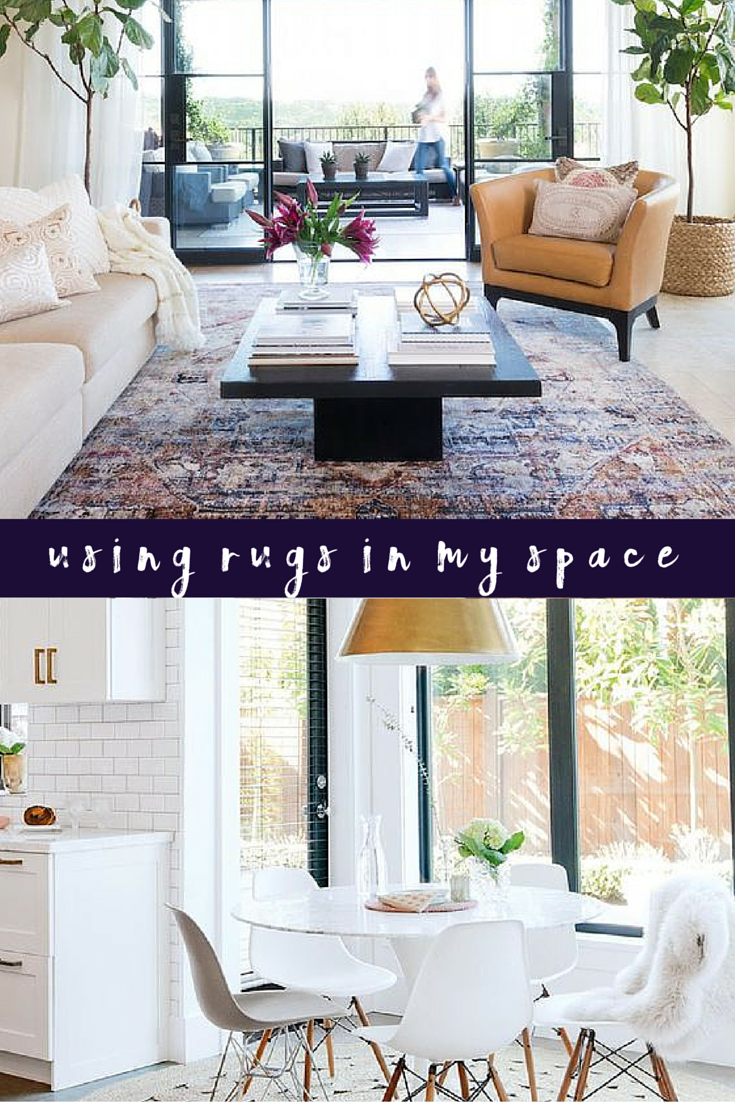Welcome to the first of my two-part series about rugs. It seems like they should be a simple thing to use in your decorating: Just pick out one you like and plop it on the floor, right? Whether you are selling a house to create an income or creating an amazing space to live and work in know the basic rules of styling are essential.
It’s a little trickier than that. You need to consider where you’re using the rug in order to select the right material and end up happy with your choice — and not wishing someone would slosh a glass of red wine over it just so you can get rid of it and start over.
Which Room?
The truth is that rugs can be used in any room of the house, though you’ll struggle mightily with a fragile lambskin near your kitchen sink. The location of your rug will determine the materials you should consider to avoid staining and premature wear:
- Living Rooms: An area rug in a major living space should be durable enough to stand up to foot traffic, but also soft enough to enjoy underfoot. Consider an extra-thick rug pad to add some plush cushioning. For the rug itself, wool wears very well and has a nice feel. It’s also surprisingly water- and stain-resistant, thanks to the fibre’s lanolin content. If you’re looking for something a bit less expensive, nylon or olefin are a reasonable synthetic substitute, and you can get ones specially treated to avoid staining.

- Dining Rooms: It’s best to choose a low-pile rug under a dining table so you can avoid spending the rest of your life picking crumbs out of the fibres. Jute and seagrass can look quite modern, but be careful: They aren’t very stain resistant. If you have young children or sloppy guests, an indoor-outdoor rug designed to be weather resistant could work well. These have come a long way and are available in quite upscale looks these days.

- Kitchens: If you have your heart set on a rug in the kitchen, it must be washable. Small, flat cotton weaves are the best choice, and it may make sense to have two so you can rotate them when one is in the wash. Be sure to add a rubber pad to help the rug grip to the floor to avoid slipping.
- Bathrooms: A standard bath mat with a rubberised base is the safest choice to prevent slip-and-fall accidents. Though they are washable, the rubber side will eventually degrade. For a more luxurious, spa-like feel, bamboo mats will wear well and add some warmth to your look.
- Bedrooms: Here’s the place where you can splurge on a rug without worrying about how well it will wear. For a master bedroom, try a silk area rug for some sheen or a soft chenille rug for pure comfort. This is also the right spot for that sheepskin: There’s nothing nicer to warm your toes in the winter than a soft sheepskin on either side of your bed.

Once you know which material to choose, you can focus on the colours and designs you love best. Next time, I’ll tell you all about choosing the right size rug for your space.
For more on styling spaces click here or for return on investment when renovating click here.


 Naomi Findlay is an experienced interior designer, project manager and stylist who also loves sharing her passions and experience by teaching others.
Naomi Findlay is an experienced interior designer, project manager and stylist who also loves sharing her passions and experience by teaching others.
Great article! In the last photo, do you know where the bed is from?
Thanks,
Laureanne
Your tips on how to use rugs properly in a bedroom were extremely helpful. The idea of having comfy silk rugs in the most relaxing place in the house really sits well with me, especially since we plan to sleep and lounge around for most of the vacation period. Once I find a place that sells antique rugs, I’ll make sure I ask for any similar materials and use them in our bedroom.